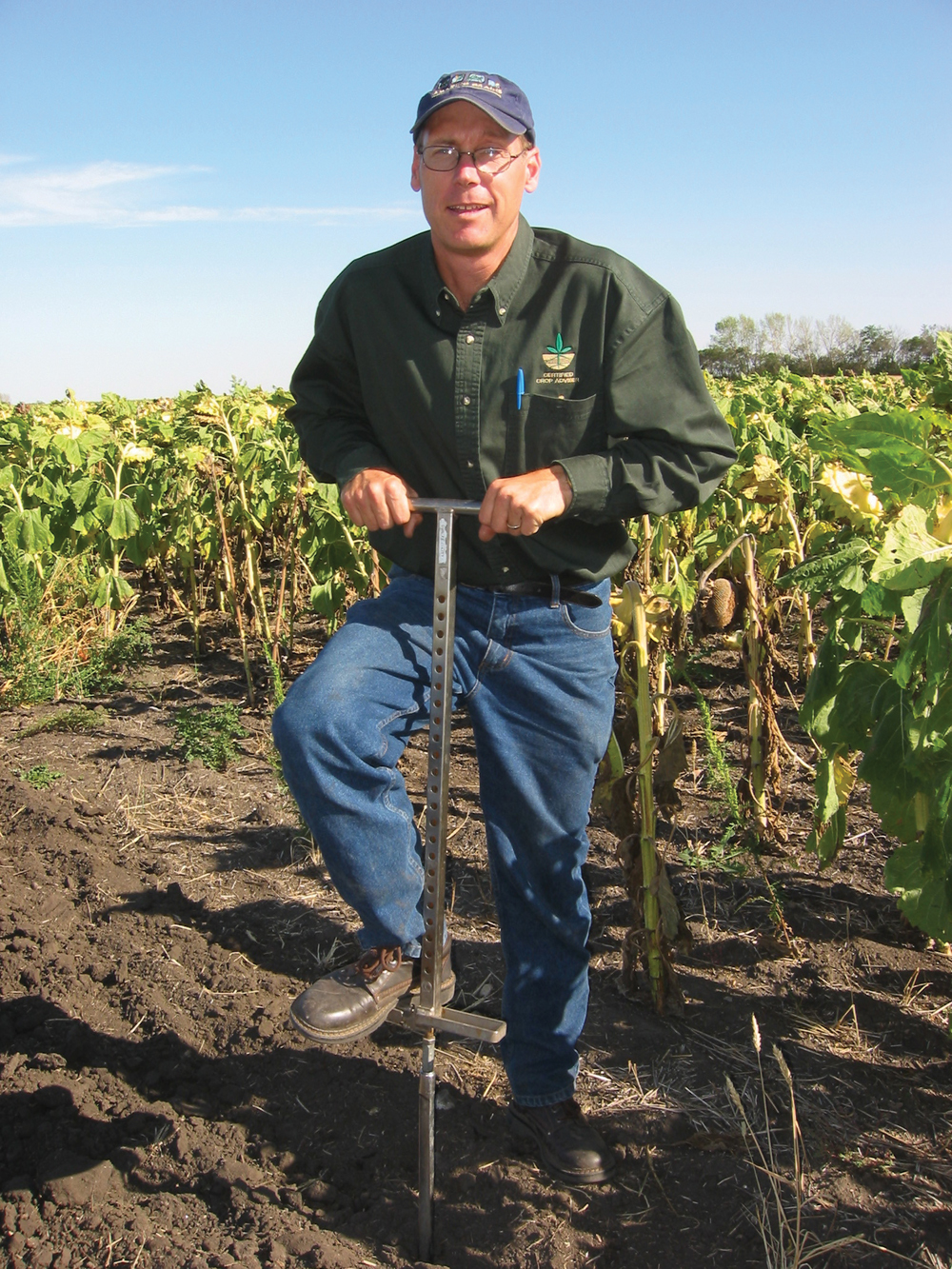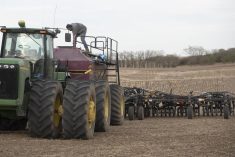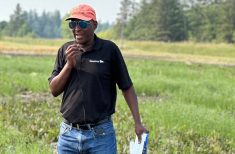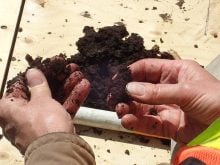Recent rains in Manitoba will be welcomed by agronomists taking soil samples and farmers looking to do fall tillage work and fertilizing, according to one provincial soil specialist.
John Heard, of Manitoba Agriculture, says fall soil tests remain the gold standard, in determining fertilizer needs for the crop.
Agronomists often like to get a jump on soil testing right after the combine since soils are generally better to sample to depth before the soil is tilled. But with the very dry soils this year, it has proved challenging for some to take full cores to 24 inches. Sometimes the soil is crumbling to dust and is not fully retained in the tubes. Recent moisture may reduce this nuisance.
Read Also

Manitoba boosts stake in cereals centre to $23.5 million
Premier Wab Kinew said the additional project funds will help ‘Trump-proof’ the provincial economy.
In speaking to southern Manitoba agronomists, early reports suggest that residual soil nitrogen (N) is very low in many fields, yet there are still some in the medium range (residual of 40-60 lbs. N/ac., Heard says. Many factors are known that may impact residual nitrate-N levels.
“In excessively wet years we can experience high losses but in the moist, warm year of 2016 we observed much mineralization from soil organic matter,” he said. “For this past very dry year we might expect little to no losses from leaching or denitrification, yet less mineralization because the soil was so dry. The main factor in residual nitrogen is always crop uptake, so when we have high yields of cereals and canola, as many have, the soil’s N is generally depleted.”
In fact, the relatively dry year that we’ve experienced is likely going to have some impact on how farmers are approaching their fall nutrient program. Heard says that farmers may be considering a “Swift Current” mentality about fertilizing. Saskatchewan farmers are much more attuned to soil moisture reserves as a guide to yield expectations and subsequent fertility rates. But our Manitoba soils are historically better recharged with moisture and more regular seasonal rainfall.
Technical challenges can also accompany dry soil moisture conditions.
When the soil is dry and hard it’s very difficult to band, apply and seal nitrogen without losses, Heard said. Just this past week (before the rainfall) we were hearing complaints from neighbours that farmers applying ammonia were gassing off too much nitrogen and causing a nuisance. When too much gas appears to be escaping, the suggestion is to either apply deeper or wait for better, moister soil conditions that allow proper slot sealing.
With most nitrogen applications, farmers should wait for the soil to cool down to 10 C or less. With early nitrogen application, there is an increase of conversion of the ammonia-form fertilizer to nitrate prior to winter. It is this nitrate form of nitrogen that is at risk to leaching and denitrification losses under wet conditions. A 2003 study conducted at University of Manitoba found that wheat yield response from fall-banded N was improved by as much as 40 per cent by delaying application from September until late in the fall, when soil temperatures had declined to 5 or 6 C.
Heard says that for the most part, the first fields being soil tested are for manure-managed fields. Because of the volumes involved, farmers have to find candidate fields and start getting manure on the fields as soon as possible. Still, putting manure on this early in the fall is subject to similar losses that chemical fertilizer is subject to but there may be ways to get around that.
Today there are quite a number of enhanced efficiency products that either control N release or help conserve the nitrogen in the ammonium form, says Heard. One of these products can also be used for manure and could be considered for manure applied very early in the fall.
Heard is talking about a Dow AgroSciences product called eNtrench. Blair Mutcher, with Crop Production Services (CPS) Canada in Carman says that usually farmers will wait until the ground cools before applying manure, but when we apply the eNtrench to the product, it stabilizes the fertilizer in the soil, he says. It holds it in the form where it isn’t going to leach into the ground.
The active ingredient in eNtrench is called nitrapyrin. According to the Dow AgroSciences website, nitrapyrin slows the activity of the bacteria that converts ammonium to nitrites for up to 10 weeks in warm soils (>10 C), reducing the risk of loss due to leaching and denitrification allowing the nitrogen to be available during peak periods of need by the crop.
“It definitely opens a bigger window, said Mutcher. He says they’ll start applying it in mid-September, which is a good two weeks earlier than they would be able to if they had to wait for the soil to cool.
While many farmers may not deem it as necessary because the time constraints aren’t as pressing as with manure, nitrogen stabilizers can also be used with chemical fertilizers and will also widen the window for those applications.
















